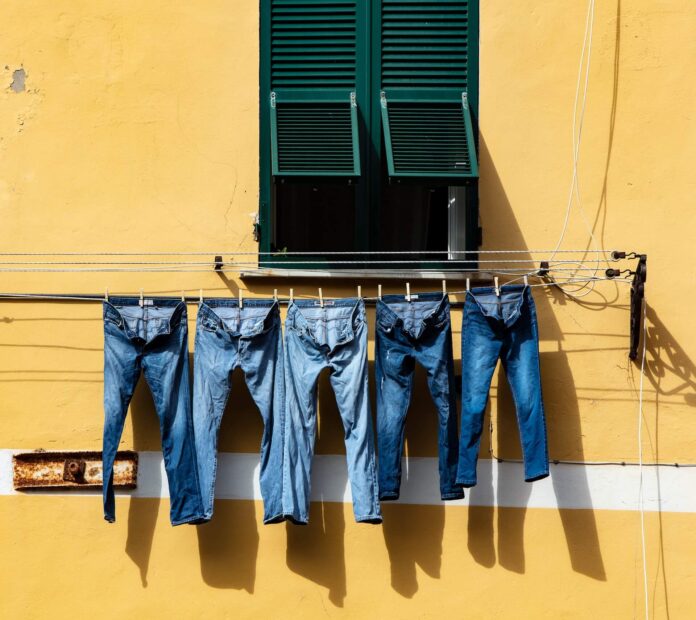Even without jargon-filled labels like “flare,” “rise,” “cut,” and “inseam,” purchasing jeans can be challenging. Find the ideal pair of jeans by understanding the terminology used to describe the various types of jeans available.
Which Type Of Jeans Is Best For Women?
Here is a quick guide to help you identify the jeans that will fit women’s particular body type the best:
Hourglass Figures: Choose high-waisted pants to hide your waist and show off those stunning hips. For these figures, even flared jeans look great.
Petite Figures: Are you too small-framed? not a problem To extend the body and create a larger silhouette, try straight-fit pants. To look fashionable, play around with various washes, rips, and sheds. Avoid wearing loose clothing since you can end up “drowning” in it!
Pear-Shaped: Jeans with a standard fit look best on these bodies. They generate a uniform shape by balancing your legs and the rest of your body. Low-rise or high-waisted pants should be swapped out.
Plus-Sized Bodies: Your new best friends are skinny and different types of jeans fits! They gracefully hug your form and draw attention to your curves. To achieve a contrasted look, choose thinner cloth!
Tall People: You can virtually try everything off the rack if you are tall and curvaceous! But according to experts, flared pants and boot cuts of jeans look especially well on these figures!
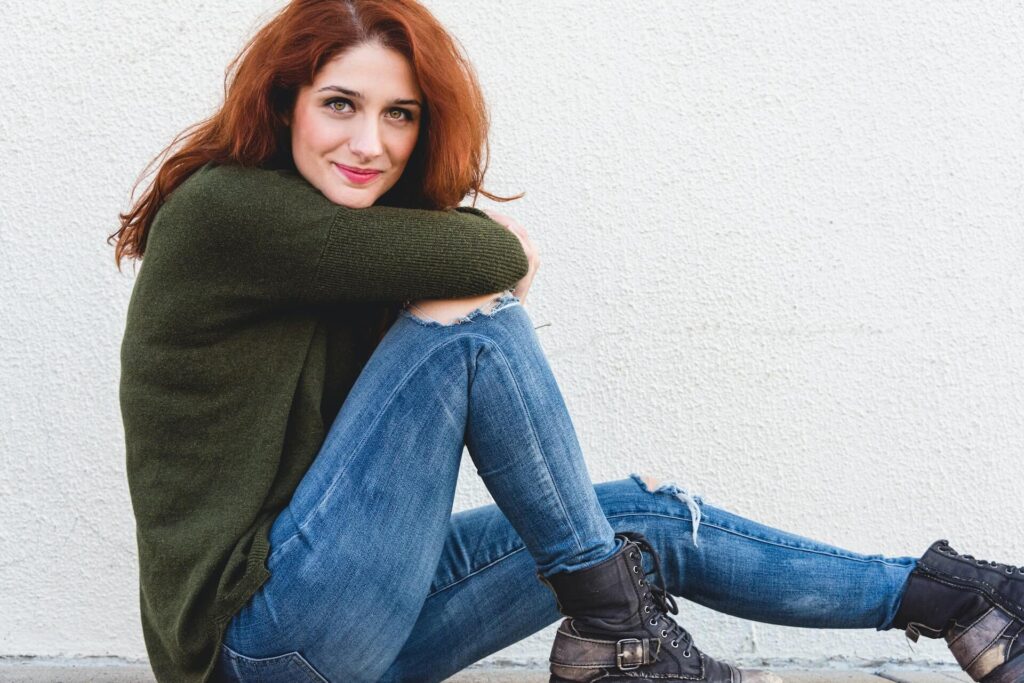

How Many Different Types Of Jeans Are There?
-
Straight Leg
Let’s begin with something straightforward. Straight-fit jeans are exactly what they sound like: The silhouette is straight from the hips through the legs. Straight jeans typically have a mid-rise that is just right and fit like Baby Bear’s porridge: they are neither too tight nor too loose. Sometimes brands will refer to this fit as a “standard straight” or “classic straight.”
If you’re seeking more precise measurements, straight-leg jeans typically feature leg holes around eight inches wide. This is an excellent place to start if you’re not sure what you’re searching for to determine your body type and ultimately how you want your jeans to fit.
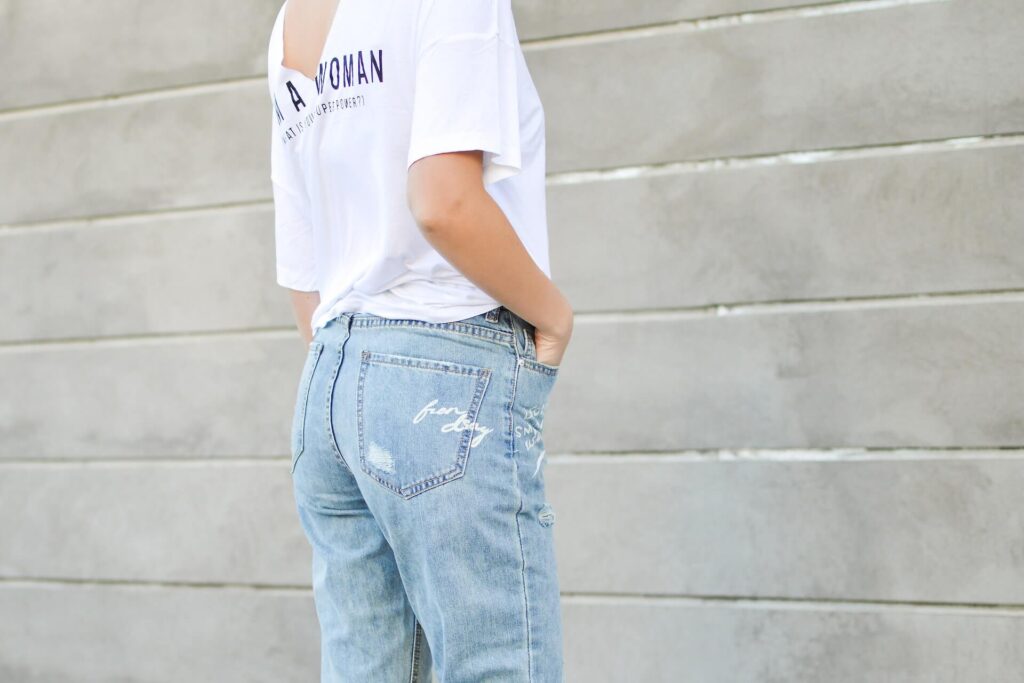

-
Straight Taper
The straight taper is the next frequently encountered jean shape, and once again, it is quite self-explanatory: the silhouette begins with a straight through the thighs, with a tapered leg that narrows beyond the knees and into the hem. Straight-taper jeans are fantastic if you need more room in the thighs but prefer a cleaner leg. These jeans are for you if you have larger legs and prefer a slim fit that is not too tight.
-
Slim Straight
The type of fit you’d find on a Ramones album cover (they wore the Levi’s 505, by the way) are slim straight jeans that are straight through the knee and at the top. These jeans, which are frequently referred to simply as slim fit, are designed with a little lower rise, sitting just above the hips, like most slimmer shapes.


-
Slim Taper
The thin taper is trimmed through the thighs and has a small leg; this is the last stop before you enter the realm of fully-fledged skinny jeans. (These are narrow jeans, though, if you have thicker legs.) Low-rise, at the hip level, or even lower, slim-fit jeans are also frequently worn.
-
Bootcut
A pair of cowboy boots can be worn over bootcut jeans, a staple of western clothing manufacturers. Each one flares out at the hem; it’s not necessarily a disco, bell-bottom level flare, but it is a flare nonetheless. They come in their sub-flavors like thin and relaxed.
Though contemporary designs usually have a low rise, classic bootcut jeans have a high rise that sits closer to your natural waist. The bootcut was last fully important in the mainstream in the early 2000s, but it has recently come back in style thanks to designers like Gucci exploring ’70s aesthetics, not to forget the persistent interest in Y2K style among Generation Z.
-
Untensed Straight
We are now moving into more cozy fits with a little more legroom. Think of these as a somewhat larger pair of 501s, or your straight-leg 501s if you have more noticeable thighs and a derriere. On the other hand, if you have a slimmer build, pick up a pair of them to err on the side of baggy denim.
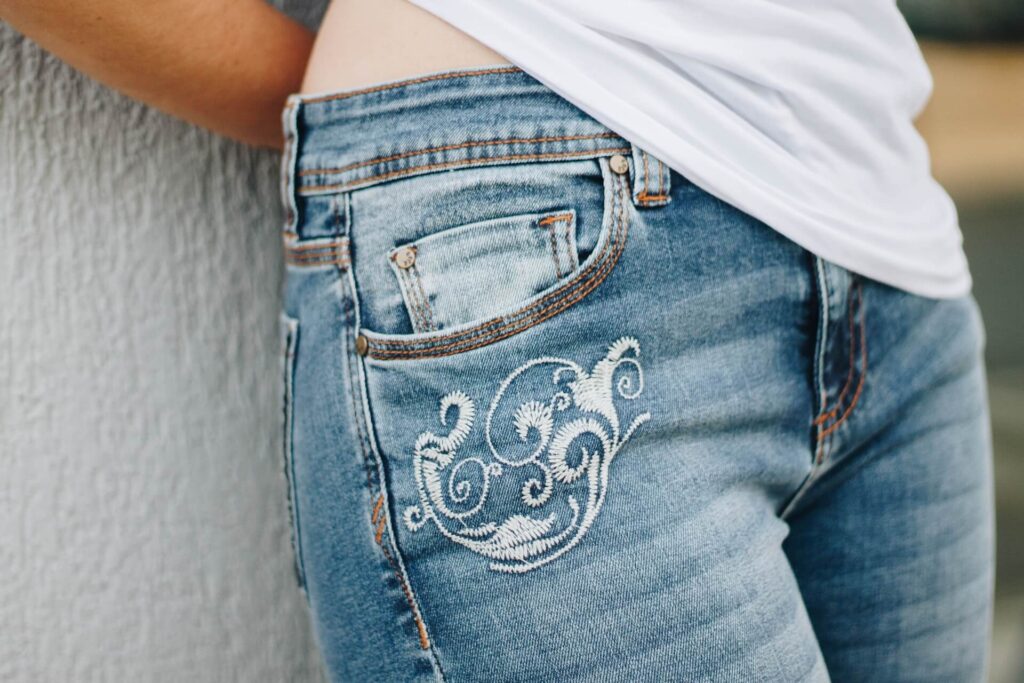

-
Relaxed Taper
The relaxed taper is intended for those who never skip leg day and is perhaps best known as the “athletic fit.” A robust pair of tree trunks are intended to be highlighted by the profile, which is roomier above the knee and tapered below for a more fitted fit. These are the ideal jeans to display your outstanding gams if you have them.
-
Wide-Leg Jeans
They are now more commonly referred to as “wide-leg jeans” and “Phat pants” as this term went out of style with the original fashion. Rappers like Kanye West helped popularise a more sophisticated indie-inspired look in the late 2000s, but the gangsta rap and rave subcultures still favor baggy jeans.
Wide-leg jeans are the way to go if you want the maximum amount of comfort and breathability. Today’s trendy baggy jeans aren’t quite JNCO-level loose, but they’re still quite spacious and, when worn appropriately, will make a bold statement.
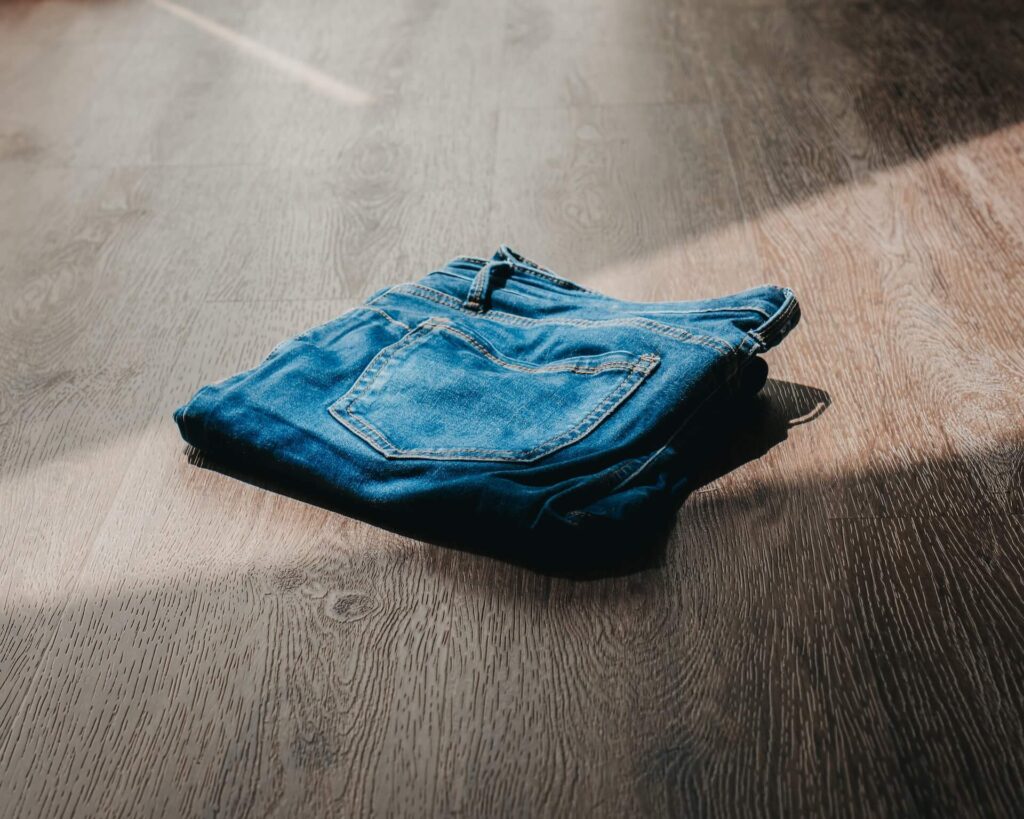

-
Mom’s Jeans
Mom jeans, which are high-waisted women’s jeans that first became popular in the late 1980s and early 1990s, are known by this informal term. They were primarily worn by American women in their forties and fifties during that time, and younger women regarded them as “old.”
-
Boyfriend Jeans
Boyfriend jeans are loose-fitting, slouchy denim pants designed to mimic the appearance of a person wearing their boyfriend’s well-worn jeans. However, boyfriend jeans frequently sit lower on the waist, giving the wearer a baggy appearance, even though they are available in high-waist designs.
-
Girlfriend Jeans
This more feminine partner is exactly that—more feminine. Girlfriend jeans are designed with a sleek straight-leg fit and a higher hip shape. The girlfriend style, which is made to embrace your curves and still accentuate your figure, will imitate the boyfriend style.
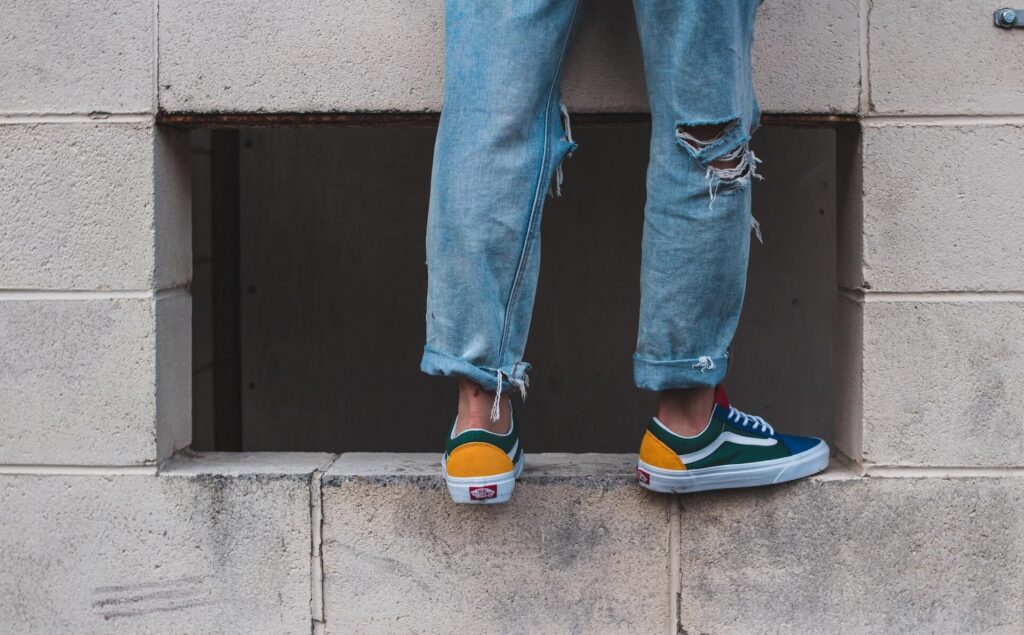

-
Classic Fit Jeans
Almost anyone can wear these jeans. Located just below the waist, this style has a mid-rise. To give the appearance of straight legs, the jeans are straight from the thigh to the ankle.
Get the original fit 501s for Levi’s most timeless style—and the most timeless pair of jeans ever. Given that jeans are currently getting wider, the 501s are especially good right now and go well with streetwear ensembles.
-
Stovepipe Jeans
Stovepipe profile with a straight leg that is at least as long as the ankle and sits high on the waist. These pants, which have a raw hem, look just as stylish worn with strappy sandals or a pair of sneakers.
Stovepipe pants are useful for inverted triangles because they strike at the lower hips, adding some weight there to counterbalance a strong shoulder. These pants have an unflared, straight cut from the hip to the knee and then from the knee to the ankle.


-
Bell-Bottoms Jeans
Bell bottoms, or pants with wider legs below the knee, were a very popular style in the 1960s and 1970s.
Cotton fibers that can hold air when wet are used to make the trouser material. The bell-bottomed trousers allow sailors to quickly remove themselves from the water without taking off their shoes if they fall overboard or have to abandon ship without a life jacket.
-
Kick Flare Jeans
Crop kick flares have made a jeans name for themselves as a must-have jean manufacturer style since 2015. The crop kick flare features a high waist and a modestly cropped hem that fits closely to the body through the knee and into a light flared leg.
Flares look amazing on women who have a more columnar shape, in which the bust and hip measurements are comparable. Your long, slender legs can support the volume if you’re tall and lean, making wide-legged pants or extremely bell-bottomed clothing look amazing.
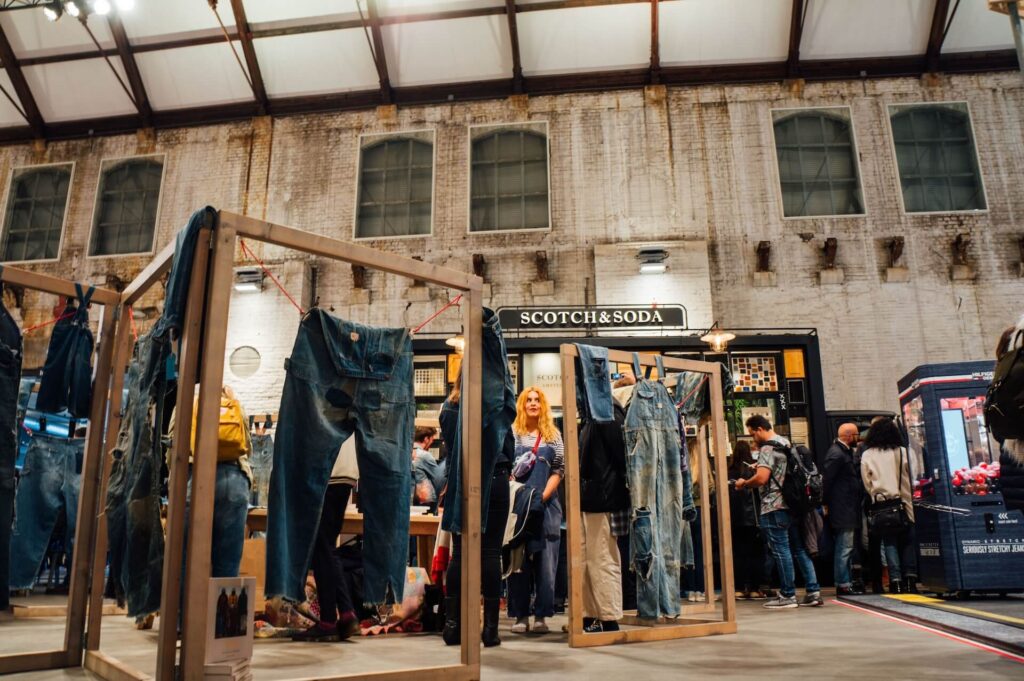

-
Cigarette Jeans
The cut of cigarette jeans is straight from the knee to the ankle (just like a cigarette), and they often have a slender silhouette. (Jeans that are ankle-length finish slightly above or below the ankle bone.)
Cigarette pants have broad waistbands, high waists, flat fronts, and rear zippers, and are slender across the legs. They have endured because the design is so attractive and appealing to a variety of body types. And because they included a side pocket for smokes, they were known as “cigarette trousers”!
-
Cargo-style Jeans
Cargo jeans, distinguished by their loose and baggy fit, are fashionable yet practical and have an unobtrusive style. They also include pockets that are deep enough to hold all of your things (think: wallet, keys, phone, and lip balm).
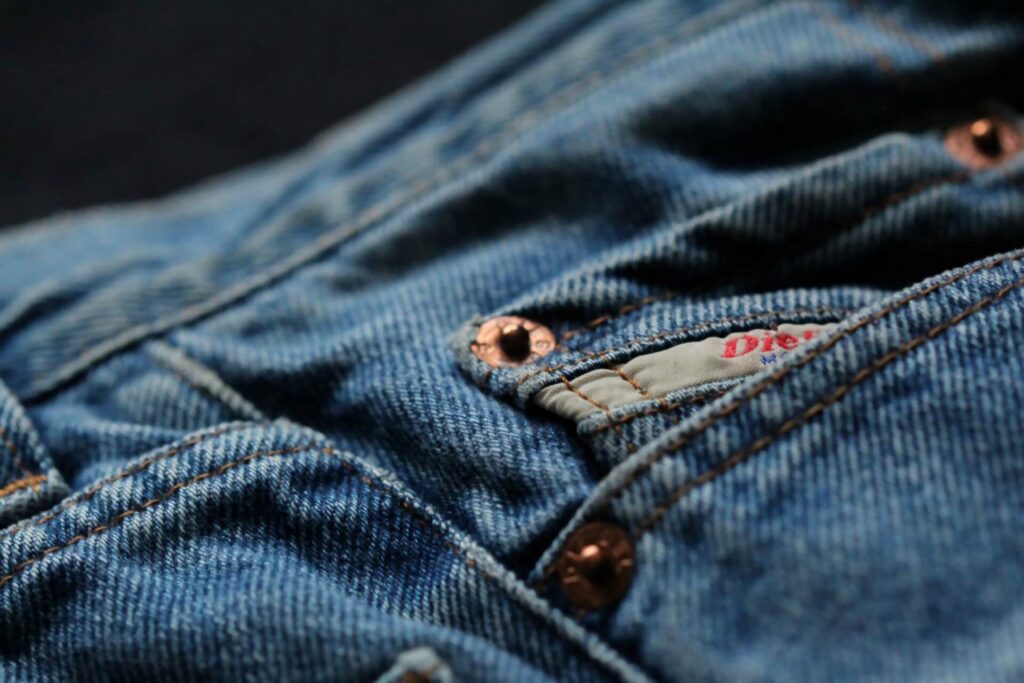

-
Capri Jeans
Capri pants are a type of pants that are longer than shorts but not as long as a pair of trousers. They are sometimes referred to as three-quarter legs, crop pants, mani-pedis, clam-diggers, flood pants, jams, highwaters, or toreador pants.
-
Retro Jeans
RETRO is all about recalling vintage fashion, reimagining it, and then bringing it back to life with a modern twist. Zoltan Csoknyay, an ambitious businessman, launched RETRO JEANS in 2001. From a young age, he had the idea of starting a denim lifestyle company.
-
Distress Jean
Denim pants made to look worn-in, relaxed, and vintage are known as distressed jeans. Distressed jeans may have rips, tears, or frayed edges, or the indigo dye may be fading. Your jeans will appear more worn-in and cosy thanks to the distressed finish, which makes them look like fashionable old jeans.


-
Ripped Jeans
Distressed refers to any denim item with rips, holes, frays, and other obvious evidence of wear.
Most people, especially young people, wear damaged jeans to appear “cool.” Poorly fitting clothing conveys a lack of concern for beauty, and for some reason, many young people think that this is the current fashion.
-
Dirty-Wash Jeans
The fabric of dirty denim jeans is worn and stained anywhere you would anticipate wrinkles. Additionally, it is damaged, making it appear used.
-
Sandblasting Jeans
We all know and adore the “pre-worn” appearance that sandblasting lends to jeans. Using a hose, an air compressor, and sand, employees can manually sandblast jeans. the procedure To give jeans that distressed look, they are actually blasted with sand.


-
Colored Jeans
With a few exceptions, jeans are typically associated with business casual. Jeans for business casual settings should be spotless and in good shape, without any rips, fading, or fraying. Avoid wearing showy or brightly colored jeans; instead, choose timeless types that you may accessorize or layer as necessary.
-
Slub jeans
“Slub” and “nep” are two words you should be familiar with. Neppy denim is woven with tiny white yarn tufts that protrude just a little from the surface, giving it a snowy appearance, as opposed to slubby denim, which is created with indigo yarn that varies in thickness to create an interesting, irregular texture.
-
Gaucho Jeans
Despite the fact that the terms “culottes” and “gauchos” are frequently used interchangeably and, to be honest, they do look quite similar, the main difference between the two is that gauchos are more akin to cropped pants than culottes and lack the fullness of the former.
-
Whisker Jeans
On the thighs of jeans, there are whiskers or fades. They are caused by creases that develop as you wear your jeans; they are particularly obvious on jeans made of raw denim.
-
Pintuck Jeans
You can add pintucks as a stylish finishing touch to jeans and other textile products. To provide contour and decorative stitching to fabric, a little fold (the pintuck) is stitched in a straight line.


-
Frayed Jeans
According to the dictionary, “fraying” is the physical act of unravelling or wearing a cloth at its edge via repeated rubbing or tension.
If you distress the bottom hem of your soft, elastic jeggings, they will fray, though not as much as ordinary denim jeans that include a higher percentage of cotton.
-
Jeans In The Carpenter Style
Carpenter jeans are pants with numerous pockets and loops that can be used to carry tools and other materials, and they frequently have a loose fit around the leg to allow the attached items.
-
Crossed-over Jeans
The Criss Cross, as their name of jeans suggests, have a crossover waistband that should be displayed with a cropped top like Chrissy Teigen’s or a shirt tucked in. They also have a trendy loose fit.
-
Cord Jeans
The sole distinction between corduroy and denim is the fabric used to make them. Corduroy is frequently like different jeans cuts. While both textiles are typically made of cotton, the twisted strands or cords in corduroy create a raised, ridged pattern that you can feel with your fingertips.
-
Ankle Length Jeans
When worn with ankle booties, you guessed it—ankle booties—ankle jeans are the ideal choice because they sit 1-3 inches above your ankle.
The majority of the time, ankle-length jeans are made to fall at or just above the ankle. They are great for wearing all year round and are incredibly versatile. A solid pair of ankle jeans is an absolute necessity for your wardrobe because they have a fit that is flattering for all seasons and allow you to wear almost any type of shoe with them.
-
Early-Rise Jeans
Regular rise, also known as mid-rise or normal rise, is intended to be worn at your natural waist and ranges in height from 9 to 11 inches. The majority of pants have a normal rise, particularly khakis and trousers.
-
Low-rise Jeans
Low-rise trousers, sometimes referred to as “low-cut jeans,” “lowriders,” or “rap pants,” are different styles of jeans that sit low on the hips or below them, typically at least 8 centimetres below the belly.
-
High-waisted Jeans
As they sit higher on the torso than low-rise jeans, high-rise which are different jeans styles has various advantages, including the ability to lessen the appearance of any bulging at the waistband.
-
Mid-rise Jeans
A flattering, leg-lengthening effect can be achieved by wearing shorts with a medium or higher waistband on short women of all body jeans types, from thin to curvaceous. The higher mid-rise jeans will suit your shape if you’re a curvy petite (look for a waistband that covers and sits slightly above your belly button).
- Skimmer
For the lady who doesn’t feel comfortable wearing shorts but yet wants an alternative to a full pair of jeans, crop, or Capri, there are pedal pushers, often known as “skimmers.” In general, pedal pushers are fashioned loosely, or slightly below the knee.
-
Capri Jeans
Denim pants with a hem that ends just above the ankle are known as cropped jeans. Cropped jeans reveal and draw attention to the narrowest part of the leg since they have an inseam that is in between the length of capri pants and full-length jeans.
-
Cuffed Jeans
They occasionally transform lines with trends yet remain timeless. What style will you adopt, cuffed jeans will once again be popular, and butterflies will be embroidered on them.
Cuffing refers to rolling up the hem of your jeans to make them slightly shorter or fully cover the hem. Your choice of how you cuff or roll up your jeans is completely up to you, but there are a few fundamental methods, ranging from a loose and casual roll-up to a more purposeful and substantial fold.
-
Heavy-washed Printed Jeans
Embrace the holiday mood with these blue-colored patterned jeans. The heavy-washed fabric is the ideal backdrop for zany designs like flamingos, coconut palms, and other doodles. Young people can flaunt their carefree attitude with this design without trying too hard. The hemline’s roll-up says a lot about your individuality!
Which Type Of Jeans is Comfortable?
-
Stretch Jeans
Starch stiffens your jeans, preventing the cotton fibres from giving. In the end, they become inflexible and weak. As a result, there is some embarrassing wear and tear in the knee, butt, and other areas.
Typically, cotton, polyester, and spandex are used to create stretch jeans. They are renowned for being quite comfortable, in contrast to their non-stretch counterparts, who are noted for their stiff feel and movement limitations.
-
Trouser-Fit Jeans
In the form of pants, the timeless style of conventional trousers is paired with the cosiness of denim. These fashionable, wearable jeans typically have a larger waistband and legs, but are fitted through the hips and back.
-
Loose-fit Jeans
The seat, thigh, and knee regions of loose-fit jeans are relaxed. In general, it’s comfortable and has a different cut of jeans that gives you plenty of flexibility to move. For instance, carpenter jeans are often loose-fitting.
-
Easy-Fit Jeans
As opposed to standard jeans, relaxed-fit jeans are roomier. They won’t squeeze up against your legs and will have plenty of room in the seat, crotch, and thigh. The rise on them is frequently longer than on different styles of jeans.
Final Words
Both men and women love wearing different types of jeans, and they can be dressed up or down depending on the situation. Originally worn by men, ripped and scratched jeans are now also worn by girls to look cool. Make sure you select the appropriate pair of jeans because there is a slight difference between men’s and women’s jeans.

